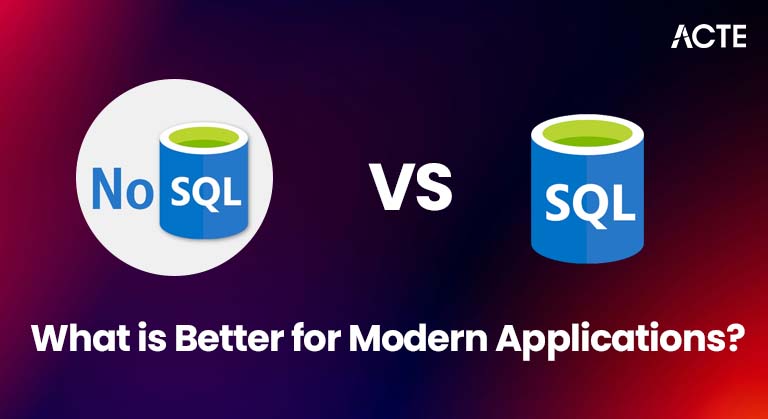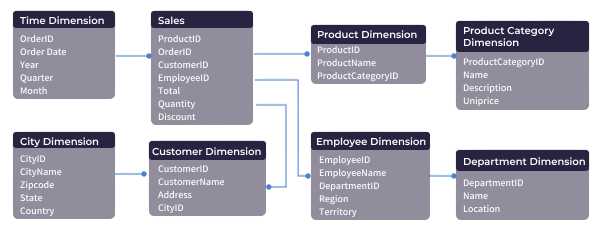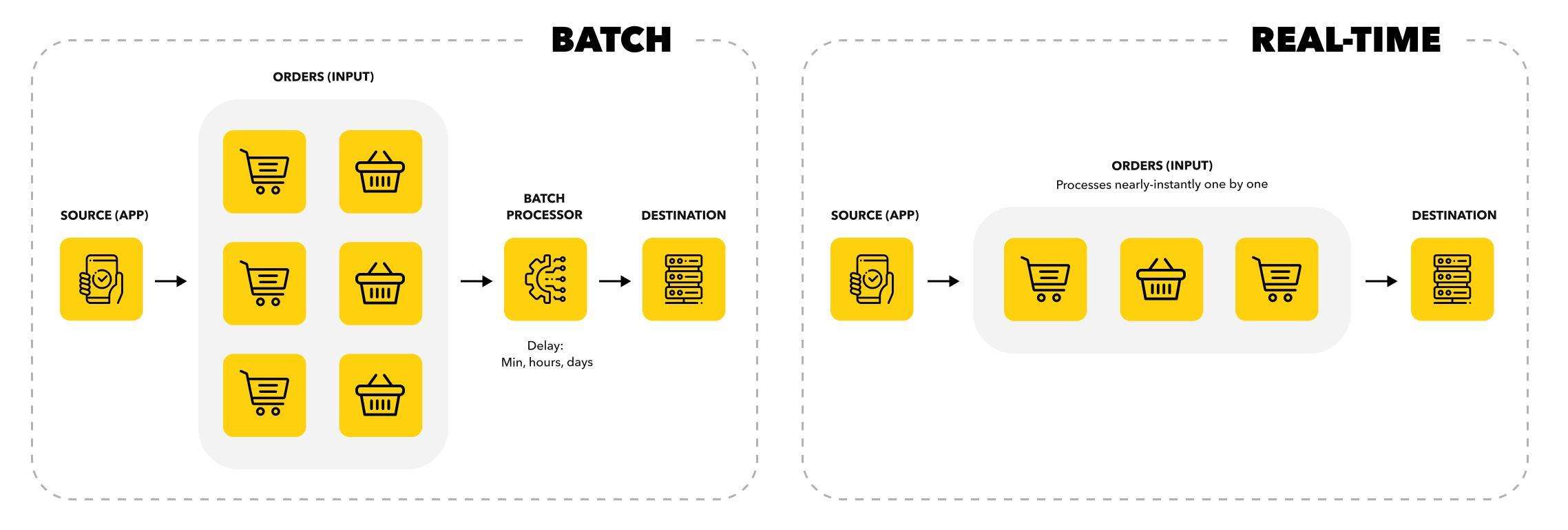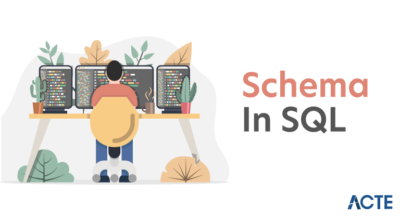
- Introduction to SQL and NoSQL
- Data Structure and Schema Flexibility
- Performance and Scalability Comparison
- Transaction Support and Consistency
- Query Languages: SQL vs JSON-based Queries
- Tools and Ecosystem
- Cost and Infrastructure Requirements
- Industry Adoption
Introduction to SQL and NoSQL
Structured Query Language databases, commonly known as SQL or relational databases, have been fundamental to data management for many years. These systems organize information into tables with clearly defined schemas, which helps maintain data integrity and ensures strong consistency across transactions. Popular SQL databases such as MySQL, PostgreSQL, and Oracle are widely used in applications where reliable, accurate, and consistent data storage is essential. They support ACID properties, which stand for Atomicity, Consistency, Isolation, and Durability, guaranteeing that transactions are processed reliably even in complex or critical environments like banking or inventory management. However, as data volumes grew and new types of data emerged, traditional SQL databases began to face challenges. To overcome these limitations, NoSQL databases were developed in the early 2000s, a key concept covered in Database Developer Training. The term NoSQL stands for “Not Only SQL” and represents a broad category of databases designed to handle unstructured, semi-structured, or rapidly changing data. Unlike relational databases, NoSQL systems offer flexible schemas, allowing data to be stored without rigid formats. This makes it easier to adapt to evolving application requirements. NoSQL databases include several types, such as key-value stores, document databases, column-family stores, and graph databases. Examples of NoSQL systems include MongoDB, which is a document database; Cassandra, a column-family store; Redis, a key-value store; and Neo4j, which specializes in graph data. These databases are known for their ability to scale horizontally, meaning they can distribute data across many servers to handle large amounts of traffic or data volume. Because of these features, NoSQL databases are well suited for modern applications like web platforms, mobile apps, and Internet of Things devices, where flexibility and scalability are crucial.
Do You Want to Learn More About Database? Get Info From Our Database Online Training Today!
Data Structure and Schema Flexibility
SQL databases require a fixed schema, meaning that before any data is inserted, the structure of the table must be clearly defined. This involves specifying the columns, their data types, and any constraints such as primary keys or unique values. This level of rigidity helps maintain strong data consistency and integrity, as every record must conform to the predefined format. However, this fixed structure can also create challenges during development, especially when data requirements change frequently or when working in fast-paced environments. Any modifications to the schema, such as adding or removing columns, usually require careful planning and often involve running alteration scripts to update the database without causing errors or data loss, which is an important factor in MongoDB vs DynamoDB discussions. This process can slow down development cycles and make it more difficult to adapt to new business needs quickly. In contrast, NoSQL databases are either schema-less or support dynamic schemas, offering much greater flexibility. For example, MongoDB stores data in BSON format, which is similar to JSON but optimized for storage and retrieval. This allows documents within the same collection to have different structures or fields. Such flexibility means developers can add new attributes to individual records without affecting others or needing to redesign the entire database schema.

This adaptability is especially valuable in Agile and DevOps environments where rapid iteration and continuous deployment are common. An example of this difference can be seen in an e-commerce application. In a traditional SQL database, the product table must be modified with specific alteration scripts whenever new product attributes are added, which can be time-consuming and disruptive. In a NoSQL database, varying product attributes can be stored alongside each other without requiring schema changes, allowing for quicker updates and more seamless development.
Performance and Scalability Comparison
- Vertical Scaling in SQL: SQL databases typically scale vertically by upgrading a single server’s CPU, memory, or storage. This method is straightforward but limited by hardware capacity and increasing costs.
- Physical and Economic Limits: Vertical scaling faces physical constraints since there is a maximum limit to server enhancements, and costs grow exponentially as hardware becomes more powerful.
- Horizontal Scaling in NoSQL: NoSQL databases are built to scale horizontally by adding more servers or nodes to distribute data and workload, a key consideration in MongoDB vs PostgreSQL comparisons.
- Data Distribution Techniques: NoSQL systems like Cassandra and MongoDB use partitioning (sharding) to split data across nodes and replication to maintain multiple copies, ensuring data availability and fault tolerance.
- Fault Tolerance and Load Balancing: Horizontal scaling enhances system resilience by avoiding a single point of failure and balancing requests across multiple servers to maintain performance under heavy load.
- SQL Performance Strengths: SQL databases often outperform in read-heavy, structured transactional environments where complex joins, strict consistency, and ACID compliance are critical.
- NoSQL Performance Strengths: NoSQL excels in handling high-velocity, high-volume operations involving semi-structured or unstructured data, making them ideal for big data, real-time analytics, and flexible schema applications.
- ACID Compliance in SQL: SQL databases fully support ACID transactions, which guarantee Atomicity, Consistency, Isolation, and Durability. This ensures data integrity and reliability, making them ideal for critical applications such as banking and finance.
- Importance of ACID: ACID properties prevent data corruption during concurrent transactions and system failures, ensuring that every operation completes fully or not at all, maintaining accurate and consistent data states.
- CAP Theorem in NoSQL: NoSQL databases often prioritize Availability and Partition Tolerance over immediate Consistency, following the principles of the CAP theorem, which states that a distributed system can only guarantee two of the three properties simultaneously, a fundamental concept explored in Database Online Training.
- BASE Properties in NoSQL: Many NoSQL systems adopt the BASE approach Basically Available, Soft state, and Eventually consistent allowing the system to remain operational and responsive even if immediate consistency is temporarily relaxed.
- Emerging ACID Support in NoSQL: Some modern NoSQL databases like MongoDB and Couchbase have introduced features that support ACID-like transactions within certain scopes, narrowing the consistency gap with traditional SQL systems.
- Trade-offs in Distributed Applications: In globally distributed environments, NoSQL databases may sacrifice immediate consistency to maintain high availability and low latency, providing faster responses at the cost of temporary data discrepancies.
- SQL Limitations in Distributed Settings: While SQL databases ensure strong consistency, they can experience higher latency and complexity in distributed deployments due to the need to synchronize transactions across nodes.
- Mature SQL Tooling: SQL databases benefit from a wide range of mature, robust tools and integrated development environments (IDEs). Examples include MySQL Workbench, pgAdmin, and Oracle SQL Developer, which provide comprehensive support for database design, query building, and administration.
- Database Design and Administration: These SQL tools offer graphical interfaces for schema design, performance monitoring, backup management, and troubleshooting, making database management more efficient for developers and administrators.
- Third-Party Integrations for SQL: SQL systems integrate smoothly with numerous third-party software for reporting, business intelligence, and data warehousing, enabling rich analytics and enterprise-grade data workflows, as explained in What is Data Modelling.
- Modern NoSQL Toolchains: NoSQL databases are supported by evolving tools tailored to their specific data models. For example, MongoDB Compass provides an intuitive UI for document exploration, while Couchbase Studio and Cassandra Query Language (CQL) tools assist in managing NoSQL clusters.
- Cloud-Native Ecosystem Integration: NoSQL databases often integrate well with cloud platforms like AWS, Azure, and Google Cloud, supporting scalable managed services and flexible deployments that meet modern application demands.
- Support for DevOps Practices: NoSQL fits seamlessly into CI/CD pipelines and containerized environments, allowing automated testing, deployment, and scaling, which is crucial for agile development workflows.
- Real-Time Processing Compatibility: NoSQL systems commonly work with real-time data processing frameworks such as Apache Kafka and Apache Spark, facilitating event-driven architectures and streaming analytics for fast, scalable applications.
Would You Like to Know More About Database? Sign Up For Our Database Online Training Now!
Transaction Support and Consistency

Query Languages: SQL vs JSON-based Queries
SQL databases use a standardized and powerful query language known as Structured Query Language, which is designed for defining, manipulating, and retrieving data efficiently. One of the strengths of SQL is its ability to handle complex operations such as joins, nested queries, and aggregations with relative ease. These features allow users to combine data from multiple tables, filter records based on various conditions, and perform calculations or summaries all within a single query. The consistent and declarative nature of SQL makes it widely adopted and supported across different relational database systems. On the other hand, NoSQL databases do not have a universal query language and instead use a variety of approaches depending on the type of database, as discussed in What is a Database. For example, document stores like MongoDB use JSON-based query languages that are designed to be intuitive and expressive when working with hierarchical or nested data structures. This allows developers to query and manipulate complex documents in a flexible way. However, while these query languages are well-suited for certain types of data, they may lack some of the comprehensive capabilities of SQL, particularly when it comes to working with highly relational data. In SQL databases, querying related tables is straightforward through the use of JOIN operations, which combine rows from two or more tables based on related columns. In contrast, MongoDB handles relationships differently by using embedding, where related data is stored within the same document, or referencing, where documents store pointers to related data in other collections. For more complex queries involving multiple stages of data transformation and filtering, MongoDB provides aggregation pipelines, which enable powerful data processing but often require more complex query construction compared to SQL.
Tools and Ecosystem
Cost and Infrastructure Requirements
SQL databases often rely on vertical scaling, which means upgrading the existing server’s hardware by adding more CPU, memory, or storage to handle increased workloads. While this approach can improve performance, it has inherent limitations because there is a maximum capacity that any single machine can reach. As a result, scaling SQL databases vertically can become expensive, especially when high-end hardware is required. Additionally, commercial SQL database systems such as Oracle and Microsoft SQL Server often involve significant licensing fees, which can add substantially to the overall cost of ownership. These costs, as outlined in A Complete Guide on SQL Optimization Techniques, include not only the software licenses but also ongoing support and maintenance fees. In contrast, many NoSQL databases favor horizontal scaling, which involves distributing data across multiple, often inexpensive commodity servers or cloud infrastructure. This approach allows NoSQL databases to handle large volumes of data and high traffic loads by simply adding more servers to the cluster. The use of commodity hardware and cloud services reduces operational expenses and makes it easier to scale out as demand grows. Furthermore, many NoSQL database systems are open-source or provide affordable managed cloud options. For example, MongoDB offers a managed cloud service called MongoDB Atlas, and Amazon DynamoDB is a fully managed NoSQL database service on the AWS cloud. These services lower the barrier to entry by simplifying deployment and reducing infrastructure management overhead. However, there are trade-offs to consider. NoSQL databases often require additional engineering effort to maintain data consistency, especially in distributed environments where data is spread across multiple nodes. Managing distributed systems introduces complexity, including handling data replication, partitioning, and fault tolerance. Ensuring strong consistency and reliability in NoSQL solutions may demand more sophisticated design and operational expertise compared to traditional SQL databases.
Want to Learn About Database? Explore Our Database Interview Questions and Answers Featuring the Most Frequently Asked Questions in Job Interviews.
Industry Adoption
SQL databases continue to dominate industries that rely heavily on legacy systems and have strict transactional requirements. Sectors such as banking, government, and healthcare depend on the reliability, consistency, and strong data integrity that relational databases provide. These industries often deal with sensitive information and require compliance with regulatory standards, making SQL’s ACID properties particularly valuable. The structured nature of SQL databases and their mature tooling also make them a preferred choice for managing complex transactions and reporting in these fields. On the other hand, NoSQL databases have gained significant traction in newer and more dynamic industries. Startups, social media platforms, and data-intensive fields like big data analytics, gaming, and the Internet of Things have embraced NoSQL for its ability to handle large volumes of unstructured or semi-structured data at scale, a topic covered in Database Online Training. NoSQL systems are designed for speed, flexibility, and horizontal scalability, which are crucial for applications with rapidly changing data or massive user bases. Well-known companies such as Netflix, Facebook, and Uber rely on NoSQL databases to support their need for fast data access, real-time processing, and high availability. Many organizations today adopt hybrid approaches that combine the strengths of both SQL and NoSQL databases. In these setups, SQL databases are often used for managing core transactional data where consistency and integrity are paramount. At the same time, NoSQL databases handle real-time analytics, user-generated content, or other data types that require scalability and flexible schemas. This hybrid strategy allows companies to optimize performance and cost while meeting diverse application requirements. By leveraging both technologies, businesses can build more robust and adaptable data architectures that cater to their specific operational needs.


